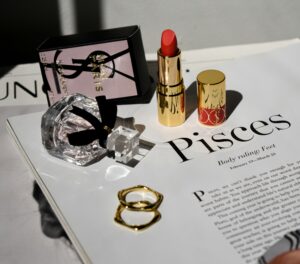23 new ingredients banned by the EU for cosmetic use

Product category
Author
The European Commission (EC) has officially banned 23 new cosmetic ingredients due to their classification as carcinogenic, mutagenic, or toxic for reproduction (CMR) under Article 15 of the EU Cosmetics Regulation (EC) No. 1223/2009.
So, what does this mean for your cosmetic brand? And how can you prepare for future regulatory changes?
Let’s break it down.
Why Are These Ingredients Banned?
The EC routinely evaluates the safety of cosmetic ingredients, especially those flagged as harmful by scientific committees. The 23 substances recently banned have been deemed unsafe due to their potential to cause cancer, genetic mutations, or reproductive harm. These ingredients are now listed in Annex II of the Cosmetics Regulation, which means they are prohibited from use in cosmetic products across the European Union.
This move aims to protect consumers and uphold the EU’s high standard for cosmetic safety.
Related Article: Regulations for Cosmetics E-Commerce that you must follow
Impact on Cosmetic Brands
This regulatory update sent shockwaves through the beauty industry. Brands were forced to:
- Pull non-compliant products off shelves
- Reformulate best-selling products
- Reassess ingredients across entire inventories
Even large companies weren’t immune. For example, Olaplex had to reformulate its cult-favorite No. 3 Hair Perfector after the ban of Butylphenyl Methylpropional (Lilial) – a widely used fragrance component.
As reported by Allure, the EU Scientific Committee found that Lilial could not be considered safe due to its reprotoxic potential – posing risks to fertility and fetal development. Following this, Lilial was classified as a Category 1B reproductive toxicant and added to Annex II.
Some Key Ingredients That Are Now Banned
Here’s a look at a few specific ingredients from the banned list:
- Zinc Pyrithione: Previously used in anti-dandruff and hair care products. It will now be completely banned, removed from Annex III and V, and added to Annex II.
- Sodium Hydroxymethylglycinate: Once authorized as a preservative up to 0.5%, it too will be removed from Annex V and added to Annex II, making it no longer permissible.
- Butylphenyl Methylpropional (Lilial): A common fragrance ingredient, now banned due to its toxicity to reproduction.
See the full law and list here.
Pro Tip
The ingredient analyzer developed by Inference Beauty automates the updates in one centralized database directly on the retailer’s or brand’s website. Additionally, we manage product data for brands and allow them to export up-to-date data at any time via CSV. We can then quickly scan inventory for banned ingredients.
What Should Brands and Retailers Do Now?
One of the biggest challenges when such regulations are enforced is the enormous data burden placed on brands and retailers. Sorting through Excel sheets containing thousands of ingredient entries can be time-consuming and prone to errors.
Retailers face an even greater hurdle: they must contact all their partner brands to verify product safety and compliance.
A Smart Solution: Inference Beauty
This is where Inference Beauty can help. Our ingredient analyzer is a centralized solution that:
- Automatically updates banned ingredient data on brand or retailer websites
- Scans product inventories to flag non-compliant items
- Exports product data in easy-to-read CSV files
- Reduces manual work and compliance risk
With Inference Beauty, you can stay ahead of compliance changes and save your team hours of work.
Want to stay in the know?
Follow us on LinkedIn where we post the latest updates on clients, news and solutions.

Regulatory changes like this are not uncommon – and they’re only going to become more frequent as consumer safety continues to be a top priority in the cosmetic industry.
If you’re a cosmetic brand or retailer, now is the time to adopt smart, automated tools to help navigate these updates smoothly. Not only will this protect your brand from legal risks and product recalls, but it will also demonstrate your commitment to safe and compliant beauty.
FAQs
Frequently Asked Questions
Talk to one of beauty e-commerce experts if you are looking for help in your ingredient management or would like to improve the ingredient transparency on your website. Book a call here >>
How do we get started?
Simply send us an Excel file with all your products and we make sure you have a complete ingredient list for your entire inventory. We provide you with a code snippet to place on your product detail page to display the INCI Explainer. The INCI-Explainer displays a full ingredient list for each product and a mouse-over for customers to read more about each ingredient
How many ingredients did you decode?
We have decoded over 60,000 ingredients, which covers the vast majority of those used in skincare and beauty products.
For what kind of businesses is this recommended?
Our ingredient analyzer is adaptable for brands and retailers and is already seen on retailer websites like Import Parfumerie and Face The Future as well as brands like Roen.



